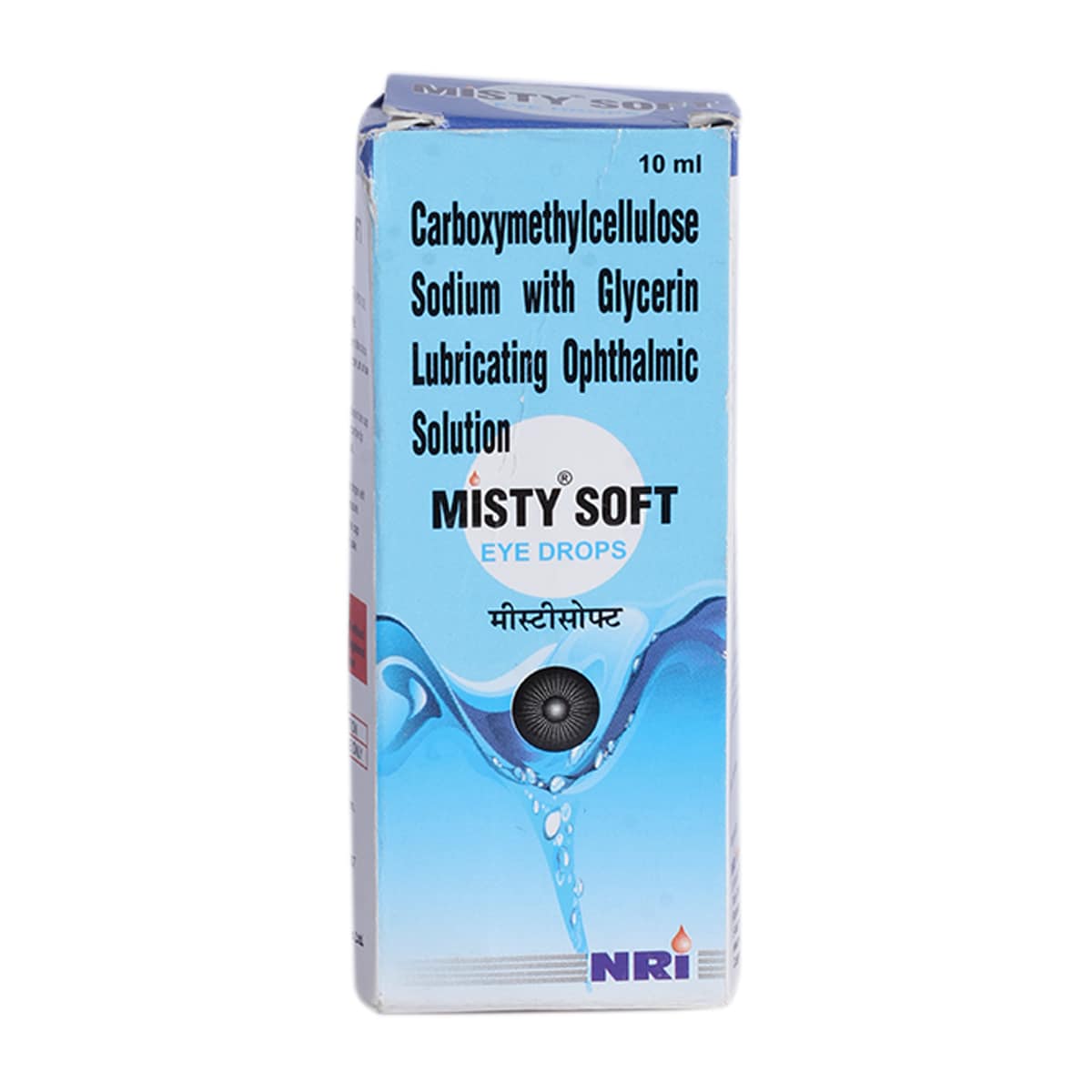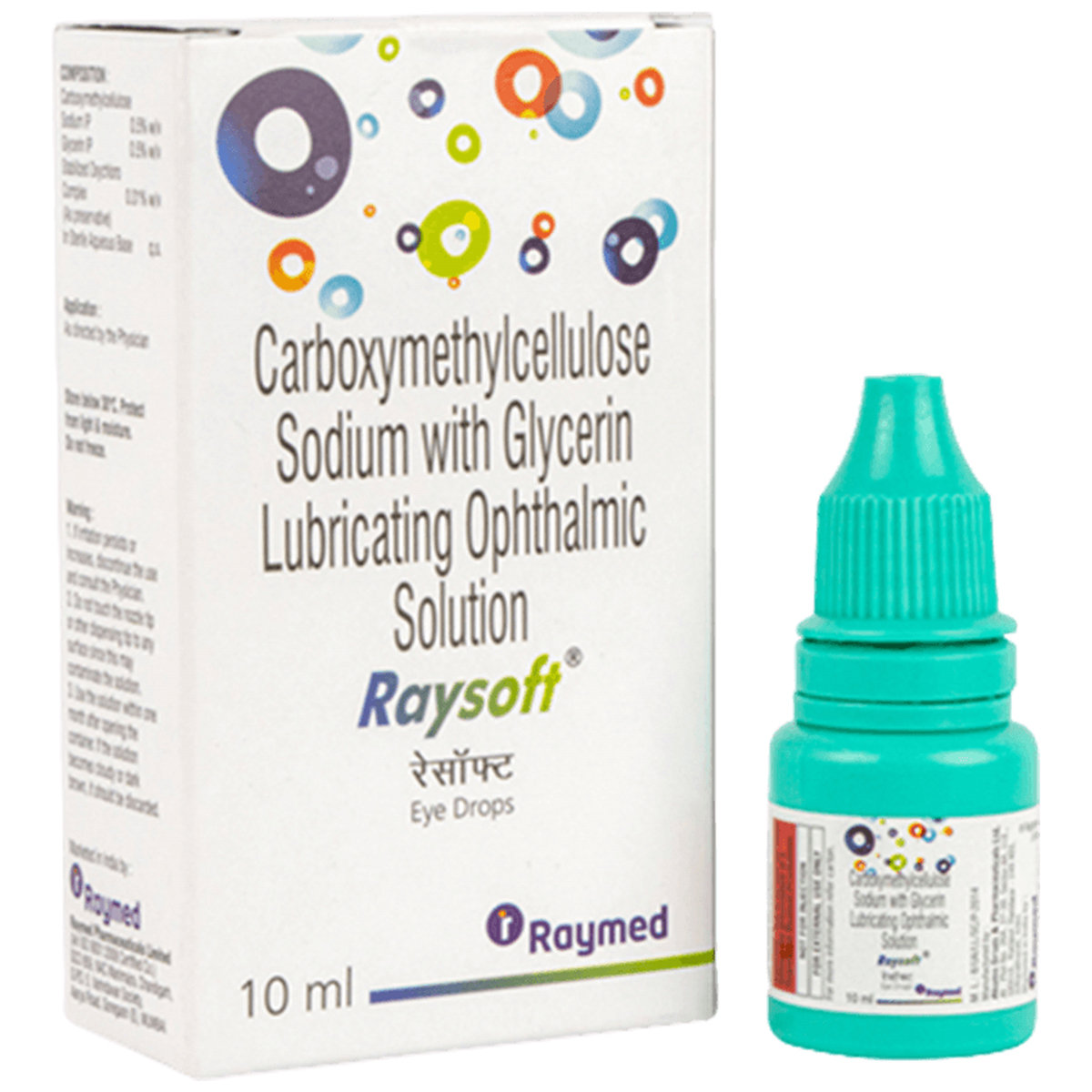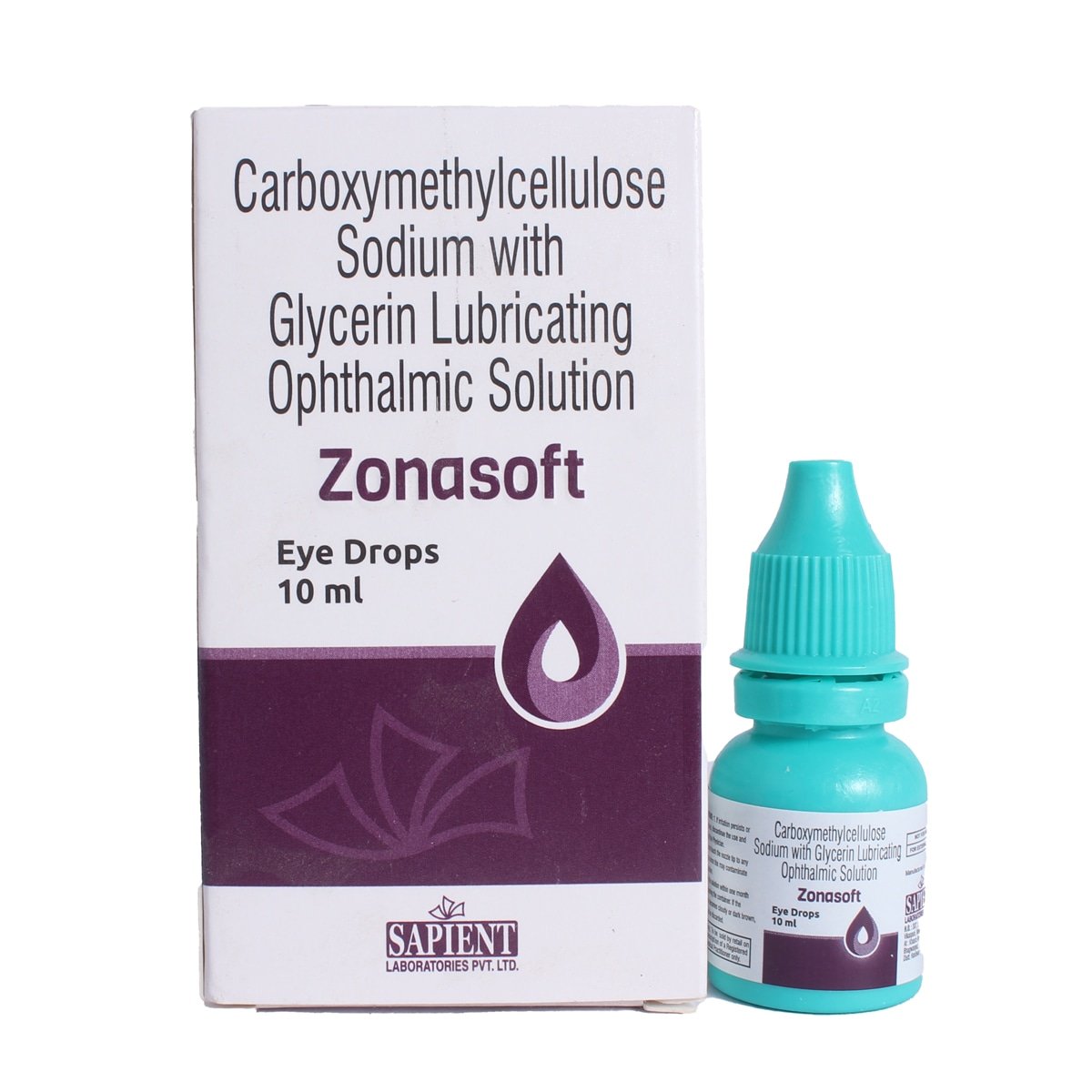Softdrops Eye Drop 10 ml
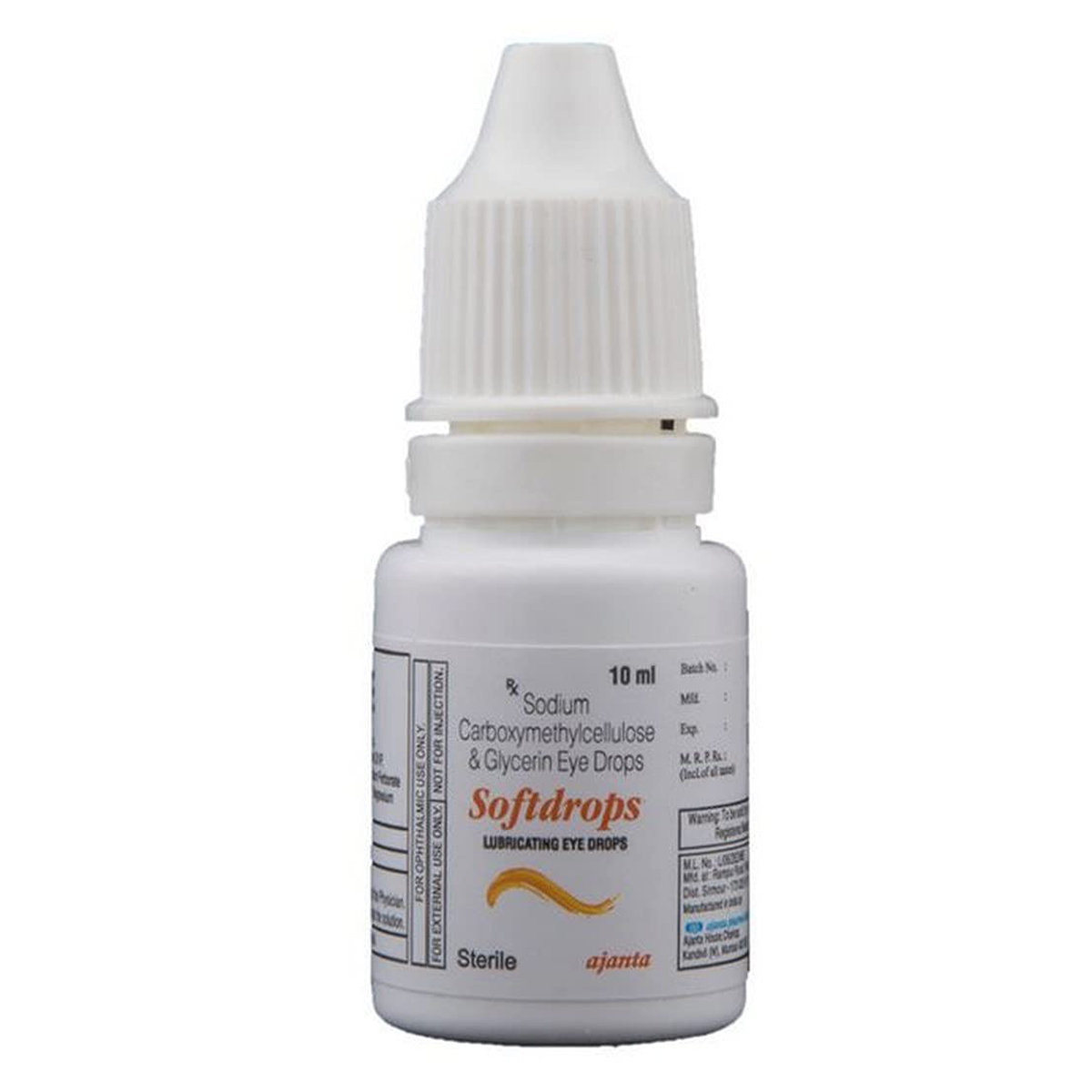




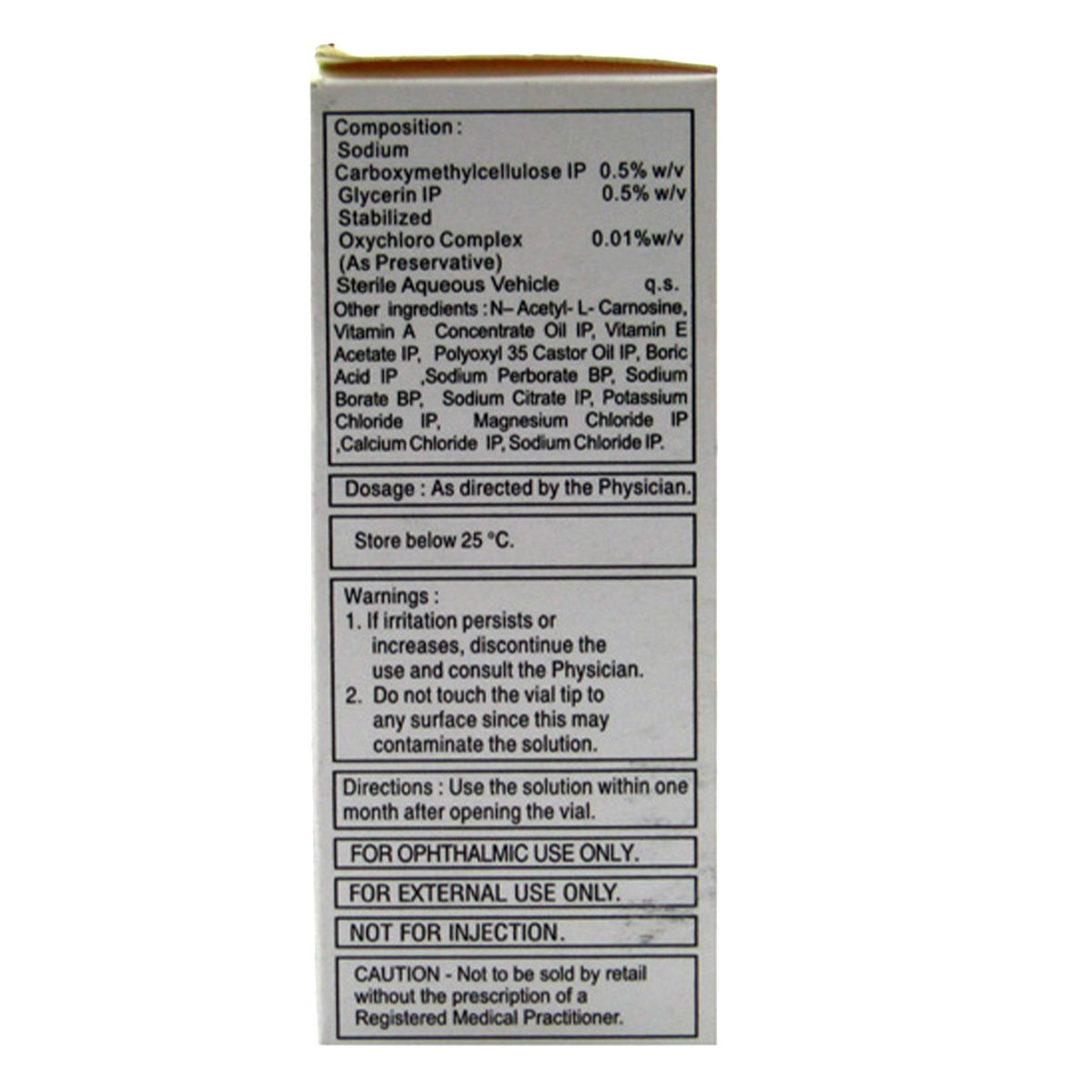
MRP ₹194
(Inclusive of all Taxes)
₹29.1 Cashback (15%)
Provide Delivery Location
Online payment accepted
 Prescription drug
Prescription drugWhats That
Composition :
Manufacturer/Marketer :
Consume Type :
Return Policy :
Expires on or after :
About Softdrops Eye Drop
Softdrops Eye Drop belongs to the class of medicines called 'ophthalmic lubricants' generally used to treat dry eye disease. Dry eye disease is a common condition that occurs if you don't produce enough tears or if you produce poor-quality tears. This tear instability leads to inflammation and damage to the eye's surface.
Softdrops Eye Drop is a combination of two medicines: Carboxymethylcellulose and Glycerin. Carboxymethylcellulose works by increasing tear viscosity in the eye. Glycerin is an ophthalmic demulcent (forms a soothing film) that works by lubricating the eye's mucous membrane surfaces. In this way, it provides temporary relief from burning and discomfort.
Softdrops Eye Drop should be taken as advised by your doctor. Some of the minor side effects are burning/stinging/ irritation may occur temporarily. Whereas serious side effects are eye pain and eye redness/irritation may occur. If it persists, take the advice of your doctor.
Before using this Softdrops Eye Drop, tell your doctor if you are allergic to any of the medicine components and wash your hands before using Softdrops Eye Drop to avoid contamination. Do not touch the bottle's tip to avoid contamination; replace the cap tightly after each use. Do not use a solution which is colour changed and cloudy in appearance. It is for external use only and use before the expiration date. Do not change or stop the dose of medicine without informing your doctor. Do not drive, use machinery, or perform any activity until your vision is clear, as Softdrops Eye Drop causes temporary blurred vision.
Uses of Softdrops Eye Drop
Directions for Use
Medicinal Benefits
Softdrops Eye Drop is a combination of two medicines: Carboxymethylcellulose and Glycerin. Carboxymethylcellulose (CMC) works by increasing tear viscosity in the eye. Glycerin is an ophthalmic demulcent (forms a soothing film) that works by lubricating the eye's mucous membrane surface. In this way, it provides temporary relief from burning and discomfort due to dry eye.
Storage
Drug Warnings
Before using this Softdrops Eye Drop, tell your doctor if you are allergic to any of the medicine components and wash your hands before using Softdrops Eye Drop to avoid contamination. Do not touch the bottle's tip to avoid contamination; replace the cap tightly after each use. Do not use a solution which is coloured, changed and cloudy in appearance. It is for external use only and use before the expiration date. Do not change or stop the dose of medicine without informing your doctor. Do not drive, use machinery, or do any activity until your vision is clear because Softdrops Eye Drop causes temporary blurred vision.
Diet & Lifestyle Advise
- Take fish in your diet, which has omega-3 fatty acids that may counter dry eyes.
- Leafy greens are rich in vitamin C which contributes to eye health.
- Drink more water, it has a big part to play in tear production.
- Avoid air blowing in your eyes
- Take eye breaks during long tasks and keep your computer screen below eye level.
- Stop smoking and avoid drinking alcohol.
- Use eyeglasses when you are going out.
Side Effects of Softdrops Eye Drop
- Irritation
- Burning sensation,
- Pain at application site.
Habit Forming
Therapeutic Class
All Substitutes & Brand Comparisons
RX
Out of StockZysoft Eye Drop
New Medicon Pharma Labs Pvt Ltd
₹200
(₹18.0/ 1ml)
3% COSTLIERRX
Misty Soft Eye Drops 10 ml
Nri Vision Care India Ltd
₹225
(₹20.25/ 1ml)
15% COSTLIERRX
Raysoft Eye Drops 10 ml
Raymed Pharmaceuticals Ltd
₹226.5
(₹20.39/ 1ml)
16% COSTLIER
Product Substitutes
FAQs
Softdrops Eye Drop should be taken as directed by your doctor. Mostly contact lens is removed while applying drops because deposits of medicine occur, vision may be unclear, and overtime leads to reddening eyes.
Better to apply the Softdrops Eye Drop first, because ointments do not allow the eyedrops into the eye. If ointment is applied first, eye drops will drain from the eye.
Softdrops Eye Drop is a combination of two medicines: Carboxymethylcellulose and Glycerin. Carboxymethylcellulose works by increasing tear viscosity in the eye. Glycerin is an ophthalmic demulcent (forms a soothing film) and works by lubricating the mucous membrane surfaces of the eye. In this way, it provides temporary relief from burning and discomfort.
Softdrops Eye Drop may cause common side effects like burning, stinging, and irritation. If it persists, take the advice of your doctor.
Softdrops Eye Drop should be used within 4 weeks of opening the bottle.
Special Advise
- If you wear contact lens, remove them before using Softdrops Eye Drop.
- Tell your doctor if your eye condition persists or worsens after 3 days.
Disease/Condition Glossary
Dry eye disease: Dry eye disease is a common condition that occurs when your tears are not able to provide adequate lubrication for your eyes. the tearing instability leads to inflammation and damage of the eyes' surface. Symptoms include a burning sensation, sensitivity to light, eye redness, a sensation of having something in your eyes, watery eyes, and blurred vision. It is caused by disruption of the healthy tear film by hormonal changes, autoimmune disease, inflamed eyelid glands, ageing, keeping contact lenses and by using some medications like antihistamines (fexofenadine), and people who have undergone laser eye surgery.

Have a query?
Buy best Ocular products by
Entod Pharmaceuticals Ltd
Ajanta Pharma Ltd
Sunways (India) Pvt Ltd
Sun Pharmaceutical Industries Ltd
Cipla Ltd
Micro Labs Ltd
Allergan Healthcare India Pvt Ltd
Intas Pharmaceuticals Ltd
Raymed Pharmaceuticals Ltd
Nri Vision Care India Ltd
FDC Ltd
Jawa Pharmaceuticals India Pvt Ltd
Indoco Remedies Ltd
Sapient Laboratories Pvt Ltd
Senses Pharmaceuticals Pvt Ltd
Centaur Pharmaceuticals Pvt Ltd
Neomedix Healthcare India Pvt Ltd
Aromed Pharmaceuticals
Optho Remedies Pvt Ltd
Aurolab
Austrak Pvt Ltd
Lupin Ltd
Mankind Pharma Pvt Ltd
Zivira Labs Pvt Ltd
Optho Pharma Pvt Ltd
Synovia Life Sciences Pvt Ltd
Akumentis Healthcare Ltd
Eyekare
His Eyeness Ophthalmics Pvt Ltd
Protech Remedies Pvt Ltd
Runyon Pharmaceutical Pvt Ltd
Alcon Laboratories Inc
Syntho Pharmaceuticals Pvt Ltd
Alembic Pharmaceuticals Ltd
Bell Pharma Pvt Ltd
Klar Sehen Pvt Ltd
Sentiss Pharma Pvt Ltd
Irx Pharmaceuticals Pvt Ltd
Optho Life Sciences Pvt Ltd
Phoenix Remedies Pvt Ltd
Alkem Laboratories Ltd
Doctor Wonder Pvt Ltd
Hicare Pharma
Ipca Laboratories Ltd
Neon Laboratories Ltd
Okulus Drugs India
Pharmtak Ophthalmics (I) Pvt Ltd
Berry & Herbs Pharma Pvt Ltd
Glow Vision Pharmaceuticals
Kaizen Drugs Pvt Ltd
Choroid Laboratories Pvt Ltd
Indiana Opthalamics Pvt Ltd
Optica Pharmaceutical Pvt Ltd
Pharmatak Opthalmics India Pvt Ltd
Samarth Life Sciences Pvt Ltd
Vibgyor Vision Care
Mofon Drugs
Novartis India Ltd
Pharmia Biogenesis Pvt Ltd
Zydus Cadila
Appasamy Ocular Devices Pvt Ltd
Leeford Healthcare Ltd
Medivision Pharma Pvt Ltd
Orbit Life Science Pvt Ltd
X-Med Royal Pharma Pvt Ltd
Zee Laboratories Ltd
Aarma Laboratories
Guerison MS Inc
Laborate Pharmaceuticals India Ltd
Xtas Pharmaceuticals
Accurex Biomedical Pvt Ltd
Blucrab Pharma Pvt Ltd
Does Health Systems Pvt Ltd
Flagship Biotech International Pvt Ltd
Lavue Pharmaceuticals Pvt Ltd
Nutrilis Healthcare Pvt Ltd
Ursa Pharm India Pvt Ltd
Vee Remedies
Vyonics Health Care India Pvt Ltd
Warren Pharmaceuticals Pvt Ltd
Abbott India Ltd
Accvus Pharmaceuticals
Akums Drugs & Pharmaceuticals Ltd
Cadila Healthcare Ltd
Carevision Pharmaceuticals Pvt Ltd
Dey's Medical Stores (Mfg) Ltd
East West Pharma India Pvt Ltd
Eyedea Pharmaceuticals Pvt Ltd
Nimbus Healthcare Pvt Ltd
Ocuris Pharmaceuticals Pvt Ltd
Sherings Pharmaceuticals
Tarks Pharmaceuticals Pvt Ltd
Vcan Biotech
Vision Medilink
Aice Health Care Pvt Ltd
Appasamy Pharmaceuticals Pvt Ltd
Asperia Lifescience Pvt Ltd
Beatum Healthcare Pvt Ltd
East India Pharmaceutical Works Ltd
Grevis Pharmaceutical Pvt Ltd
Alcohol
Caution
No interactions were found. Please consult your doctor in case of any concerns.
Pregnancy
Safe if prescribed
Softdrops Eye Drop is probably safe to be used in pregnancy. However, please consult your doctor before using Softdrops Eye Drop.
Breast Feeding
Safe if prescribed
Softdrops Eye Drop is probably safe to be used in breastfeeding mothers. However, please consult your doctor before using Softdrops Eye Drop.
Driving
Caution
After applying Softdrops Eye Drop, your vision may be unclear, so take some time and relax and then go for a drive.
Liver
Safe if prescribed
Softdrops Eye Drop is probably safe to use in liver diseases. Please consult your doctor before using Softdrops Eye Drop.
Kidney
Safe if prescribed
Softdrops Eye Drop is probably safe to use in kidney diseases. Please consult your doctor before using Softdrops Eye Drop.
Children
Safe if prescribed
Softdrops Eye Drop could be used in children only if prescribed by the doctor.



